简介
转到步骤 1欢迎来到主机拆解周的第三天,目前我们已经拆了 Magnavox Odyssey 100和RCA Studio II,雅达利 2600就是我们下个目标。我们和partnered with PC World 合作的这个拆解让大家一窥当年游戏主机的主角。
最初被称为视频电脑系统(VCS),雅达利2600发布于1977年,当时,最受欢迎的基于微处理器的硬件是仙童公司的Channel F,(VCS)是雅达利公司对这个领域的第一次进攻。
这个机器最初发布的时候,机器前面有6个开关,后来1980年机器被重新设计,变成4个前面板的开关,2个背面,现在拆解的这部是1980年后的机型。
你所需要的
-
-
-
从发售的1977年到1983年,雅达利2600官方名称是视频电脑系统,对应仙童半导体公司的视频娱乐系统,后面这个机器重新命名为它的型号,CX2600。
-
不同于内建游戏的其他主机像Magnavox Odyssey 100,雅达利用可拆卸的卡带存储游戏,像太空侵略者,吃豆人和陷阱等
-
每个玩家都能通过难度转换开关来选择难度,但究竟是A比较难还是B比较难呢?(A比较难--见评论解析,译者注)
In regards to the difficulty switches, switching to "B" was the easier setting and switching to "A" was the harder setting. Some examples:
Missile Command:
A: Make the missiles you launch slower
B: Make the missiles you launch faster
Space Invaders:
A: Makes your base bigger (and most likely to be hit)
B: Makes your base smaller
Asteroids:
A: UFOs appear
B: UFOs does not appear
Hopefully the information I provided here will help those confused with the difficulty switches.
The "anyone's guess" comment was inappropriate. The system owner's manual mentions in section 5 that position "A" is generally more difficult than position "B". Every game instruction manual described exactly what the functions of the difficulty switches were for that game, if they did anything at all. There are a few games which were inadvertently made with difficulty settings reversed from the standard.
ajfranzman - 回复
Dude. No one cares.
I totally care!
I care deeply. But where is the switch? Is it underneath the console?
On the console shown in this article, difficulty switches are on the back upper edge (visible above the cartridge port in the photo above at Step 2 of this guide). This puts each player’s difficulty switch just inboard of his or her controller port.
On consoles with 6 silver-colored front panel switches, the switch nearest the cartridge port on each side is the difficulty switch.
-
-
-
哎呀,我去,就给我看这个???外壳设计组一定想给主板设计组自由飞翔的空间吧(事实上这是第三版的硬件设计,第一版的内容肯定更多)。
-
Jay Miner将显示和音频芯片集成到一块集成电路里面来节省主板面积,但这个外壳体积也大得夸张了吧。
-
这是我从来没有见过的设计,主板与水平面有30度左右的倾角,这也解释了外壳螺丝倾斜的现象。
The case design seems unusual even when you consider the original, 6-switch model. See here: http://www.longhornengineer.com/Videomod...
The reason for the case being so large was that originally it included two speakers for stereo audio output. These were deleted at the last minute in favor of mono audio through the TV as a cost-saving measure, but the very earliest 6-switch consoles have circular-layout speaker slots in the top and support posts cast into the case bottom. In fact, it took Atari quite a long time to completely close off the speaker slots, as even some of the 4-switch models (like the one used here) still have them. I've even seen case tops with speaker slots on only one side!
Here's a much better picture of the insides of a 6-switcher: http://oldcomputers.net/atari-vcs.html
I guess that the round tripods near the front of the case were for holding the speakers.
cityzen -
This photo should be replaced, as it shows incorrect routing of the RF cable (apparently someone has opened this console before). From the RCA socket on the motherboard, the cable should be placed thus: first, it should go toward the *front* of the console (from a player's perspective; i.e. "southwest" as the console is positioned in the present photo) alongside the main EMI shield, and between that shield and the RF modulator unit. Then it should turn 90 degrees toward the player's right and be pressed into the slot in the top of the fat round post. Then it should make another gentle 90 degree turn to head toward the rear of the console and be pressed in place between the small hollow post and the fin beside it, which supports the case top. Proceeding rearward, the cable may either be pressed between the pair of fins, or between the rightmost fin and the case side (as the pair of fins are actually a bit too close to one another) before winding around the remaining plastic bits to finally make its exit from the rear of the case.
ajfranzman - 回复
-
-
-
-
机器的大脑!
-
雅达利2600的配置
-
1.19MHz 8位处理器
-
128 bytes 内存
-
192 x 160 像素分辨率
-
128色,最多4色每线
-
2条单声道
-
不像早期的游戏主机——游戏存储在机器内部,2600把游戏存储在卡带里面的只可读内存(ROM)中,所以理论上你可以玩到无限多的游戏。
The three main chips are socketed (!) for easy replacement.
Yes, socketing the chips DID make replacement easy. However, because they are of the DIP (Dual Inline Package) design, they have one annoying flaw: They tend to "walk" out of the sockets over time. Here's how it happens: When you turn the system on and off, the internal circuitry heats up and cools down. This causes expansion when heated, and contraction when cooled. Over a period of time, this causes the chips to "walk" out of the sockets, causing bad contact and the system will fail to power up. The solution is to open it up and reseat the chips back into the socket. This is one annoying thing about that design. The original IBM PC had a lot of sockets for its memory, and when the event I described happens, the computer would refuse to power up. That's the reason why SIMMs and DIMMs were introduced.
It's interesting to note that the 6507 was a 6502 with some data lines deleted. This meant that the 2600 can only access up to 4K. However, some companies used a bank switching technique, so some cartridges had as much as 16K! That was quite a bit in those days, as memory was pretty expensive.
-
-
-
上面两个芯片是6532 内存I / O定时器和MOS科技的6507 CPU(精简版6502)现在这个硬件版本是由Synertek和Rockwell分别生产的。
-
雅达利的定制芯片 电视界面适配器(TIA)是雅达利的赚钱利器,它能增强显示和声音效果,让更多颜色显示在屏幕上。
-
2600设计的时代内存太贵了,视频处理器没有安装外部内存,导致CPU处理完的数据只能一次一条线地发送到 TIA上面。
-
2600的TIA只能处理6种元素,游戏背景场地,两个精灵(8像素线),一个球(单像素点)和两个火箭(2像素线),组合成的画面的游戏。
Pretty sure that the 6507 in that picture has a MOS Tech mark on it, not Motorola. The chip on the bottom (which I think is the TIA, not 100% sure) appears to have a Motorola mark on it, though.
Indeed, Motorola did not make the 6502/6507, although they could have. The history is interesting: http://en.wikipedia.org/wiki/6502
cityzen -
Oh, and the 6507 has a Rockwell logo on it. Rockwell licensed the 6502/6507 and eventually came out with their own versions. Synertek was another licensee.
cityzen -
-
-
-
除了那个电路板孔和手画的电路板以外,主板的背面真的没有什么值得看的。
-
硬件版本号是REV.13
I think that the giant solder blob underneath the voltage regulator is kind of interesting. I'll have to keep that technique in mind when I need a DIY heatsink in my own projects.
Also kind of interesting are the wrinkly traces. This is due to "hot air solder levelling" (HASL) where the traces were coated with solder before the solder mask was applied, which helped reduce corrosion and with wetting at nearby joints. During the later wave soldering process, the HASL solder would melt again under the mask, and wrinkle as it cooled down. You can see this on a lot of 1970s and 1980s PCBs.
-
由衷感谢以下译者:
100%
wewewawa正在帮助我们修复这个世界! 您也想加入吗?
开始翻译 ›
18指南评论
Your IC ID on this teardown is incorrect.
The Rockwell chip in the middle CO10745 is the 6507 CPU
The Motorola CO10444 is the TIA and the Synertek is the 6532 RIOT IC
-John
Curator
The CPU Shack Museum
www.cpushack.com
Agreed, and I don't get how you guys came to the conclusion of "a great appreciation for [...] hand drawn circuits".
I see nothing but straight lines, which very well could be neatly hand drawn, but just as easily could be CAD'ed.
But otherwise I love your teardowns of classic hardware. Keep them coming!
Michael -
Perhaps they meant to suggest that the traces were laid out manually using a CAD program, as opposed to auto-routed?
cityzen -
Perhaps by "hand drawn" they meant "hand taped," the more usual method for circuit layout. While I have done small boards with a photo-resist pen on the copper or a marker on a mylar mask, it was more usual and easier to use a strong black tape on the copper or the mask. It came in varying widths, and you could also buy stick-on or transfer pads for through-holes and sets of pads for ICs. When taping out stuff it was definitely easier to do straight lines than curves!
Also, the TIA is not a 6505 as Step 9 states. According to Hyperlink (last image) the 6505 is only 28 pins (the TIA is 40), and according to Hyperlink the 6505 is a feature-reduced version of the 6502 CPU, much as the 6507 is.
ajfranzman - 回复
Note that some of the 2600 consoles had (very slightly) different lengths of screws, and putting them in wrong would tear up the traces on the board. http://www.atarimuseum.com/videogames/co...
The article you linked mentions "two sizes of self-tapping screw". Self-tapping screws were only used in the consoles with six switches on the front, from the first two production runs. The issue was resolved by the time those with four front switches were made, like the one used for illustration of this article.
Esa FUE mi primer consola y con esa aprendi ELECTRONICA yo la limpiaba y la reparaba …… Que buena epoca esa
Que?
12345678
I had a 2600 when I was a kid I loved it
Awesome! This console was the reason for my entrance into Electronics as a Technician.
Belle jouex classic
عويد Glace - 回复
o meu nao esta ligando





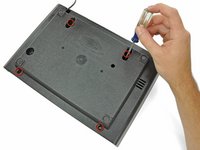
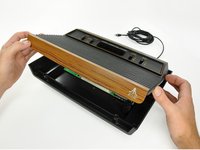



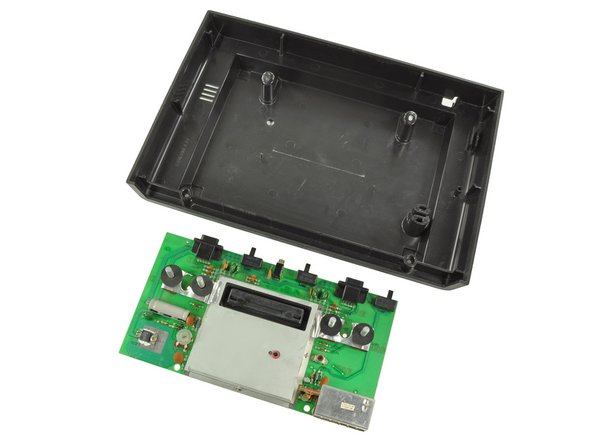
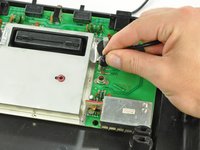
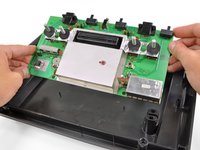
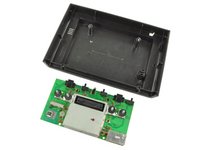



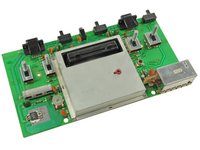
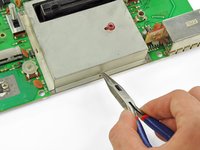






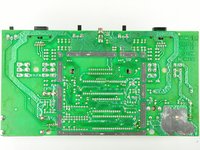
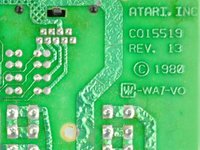

The Playstation 3 comparison should include the fact that the 2600 came with controllers for two players (two joystick and two paddles) and a bundled game. Adding an extra controller and game would make the inflation-adjusted Playstation price nearly the same as the Atari.
Jonathan Kagle - 回复